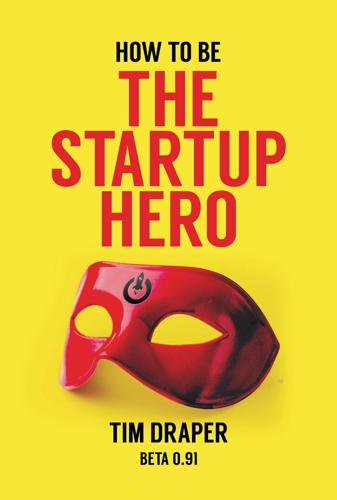
How to Be the Startup Hero: A Guide and Textbook for Entrepreneurs and Aspiring Entrepreneurs
by
Tim Draper
Published 18 Dec 2017
But Larry wanted to run his own fund and started Labrador Ventures, leaving John and I without our tiebreaker. If we were going to build a great business, we would have to figure out how best to make decisions when we disagreed. Our dilemma was solved when we met Steve Jurvetson. I got an unsolicited resume in the mail that looked almost too good to be true. Steve Jurvetson had graduated in two and half years and was number one in his class in electrical engineering from Stanford. He then got a master’s degree, again graduating as the top student. He had written a patent and seven of his chip designs were manufactured by HP before he left the engineering school at Stanford.
…
John Fisher decided to focus on late-stage investing and created and helped build DFJ Growth with Barry Schuler, former CEO of AOL, and Mark Bailey, who previously worked at KPCB, Symantec and WebMD. Later they were joined by a former venture capitalist from the Tribune Group, Randy Glein, who became a major workhorse for the fund. Steve Jurvetson, Andreas Stavropoulos and our new star partner, Josh Stein, stayed the course and drove DFJ Venture. I raised a new early-stage fund with my son Billy, reclaiming the original name Draper Associates. I also created an ecosystem around Draper University and relaunched the Draper Venture Network with Gabe Turner.
…
But, when I pushed my partners to invest in Tesla, there was some understandable discomfort in the idea, since the startup junkyard was full of failed car companies from the DeLorean to the Packard. Many had tried to start a car company to compete with the oligopolistic Big Three, but all of them had failed for lack of capital. I did have some strong support though. My partner, Steve Jurvetson, was also particularly excited about investing in Tesla, since he too got a test drive from Ian Wright that first day, but the rest of the partners made a very strong case. By the end of the discussion, we all knew that it would be difficult for our partnership to support the company alone. Success would require too much capital.
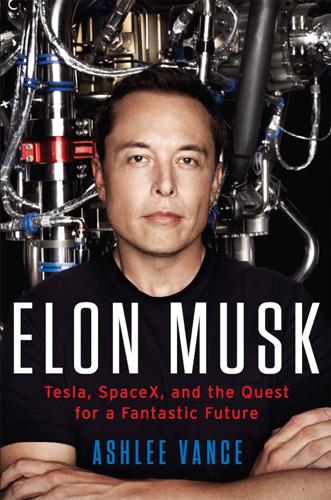
Elon Musk: Tesla, SpaceX, and the Quest for a Fantastic Future
by
Ashlee Vance
Published 18 May 2015
The two men speak almost every day, as can be seen in this meeting in Musk’s SpaceX cubicle. ©Steve Jurvetson SpaceX’s ambitions grew over the years to include the construction of the Dragon capsule, which could take people to the International Space Station and beyond. ©Steve Jurvetson Musk has long had a thing for robots and is always evaluating new machines for both the SpaceX and Tesla factories. ©Steve Jurvetson When SpaceX moved to a new factory in Hawthorne, California, it was able to scale out its assembly line and work on multiple rockets and capsules at the same time. ©Steve Jurvetson SpaceX tests new engines and crafts at a site in McGregor, Texas.
…
©Steve Jurvetson SpaceX tests new engines and crafts at a site in McGregor, Texas. Here the company is testing a reusable rocket, code-named “Grasshopper,” that can land itself. Photograph courtesy of SpaceX Musk has a tradition of visiting Dairy Queen ahead of test flights in Texas, in this case with SpaceX investor and board member Steve Jurvetson (left) and fellow investor Randy Glein (right). ©Steve Jurvetson With a Dragon capsule hanging overhead, SpaceX employees peer into the company’s mission control center at the Hawthorne factory. Photograph courtesy of SpaceX Gwynne Shotwell is Musk’s right-hand woman at SpaceX and oversees the day-to-day operations of the company, including monitoring a launch from mission control.
…
It could then sell Tesla to a Detroit automaker or focus on selling electric drivetrains and battery packs instead of making cars. Such reasoning would have been quite practical from a business standpoint but did not match up with Musk’s goals for Tesla. “VantagePoint was forcing that wisdom down the throat of an entrepreneur who wanted to do something bigger and bolder,” said Steve Jurvetson, a partner at Draper Fisher Jurvetson and Tesla investor. “Maybe they’re used to a CEO buckling, but Elon doesn’t do that.” Instead, Musk took another huge risk. Tesla recharacterized the funding as a debt round rather than an equity round, knowing that VantagePoint could not interfere with a debt deal.

Space 2.0
by
Rod Pyle
Published 2 Jan 2019
The Falcon 1 rocket first flew into orbit successfully in 2008—a year that had also seen financial difficulties plague SpaceX. In the wake of a series of launch failures, Musk found that he had burned through the initial funds he had allocated to the company. SpaceX was in dire straits. Musk reached out to an early investor in his Tesla automotive company, Steve Jurvetson, who put together an infusion of cash for SpaceX following an earlier investment of $20 million from a group called Founders Fund. Continuing to follow his incremental design philosophy, Musk took the now-proven engine from the Falcon 1 and clustered nine of them into a larger, more advanced rocket—the Falcon 9, which first flew in 2010.
…
Seen here is a completed Merlin rocket engine, bound for the first stage of a Falcon 9. Image credit: SpaceX It’s a broad statement, and a project not without its complications. Providing inexpensive ground stations to less affluent populations will be a challenge, for example, along with more access to electrical power. But it’s a grand vision. Steve Jurvetson, the investor who stepped up to assist SpaceX in its darkest hours in 2008, concurs. The satellite initiative will eventually “bring four billion people online who are not currently able to access the internet, and that’s triple the current online population. Think of the educational opportunities, and possible entrepreneurship.
…
This is best for people who want in on the potential profits without having to extensively research the marketplace, and those who want to minimize risk. Other investment groups research and concentrate specifically on space-related investments in both established aerospace companies and newer companies—including promising start-ups. Among the large investors you’ll find people such as Steve Jurvetson, a former partner at Draper Fisher Jurvetson Venture Capital (DFJ), who has been responsible for billions in high-tech placements, much of this in space-related companies. While major investors can be found around the world, the vast majority of investment currently originates from the United States.
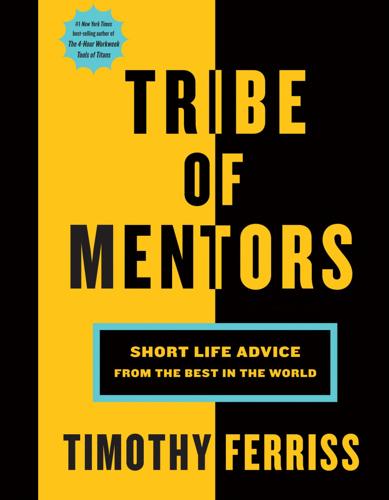
Tribe of Mentors: Short Life Advice From the Best in the World
by
Timothy Ferriss
Published 14 Jun 2017
–Mae West One of the greatest female stars of classic American cinema “If you find yourself in a fair fight, you didn’t plan your mission properly.” –Colonel David Hackworth Former United States Army colonel and prominent military journalist “Celebrate the childlike mind.” Steve Jurvetson TW: @DFJsteve FB: /jurvetson dfj.com STEVE JURVETSON is a partner at DFJ (Draper Fisher Jurvetson), one of the top venture capital firms in Silicon Valley. Steve has been honored as a “Young Global Leader” by the World Economic Forum, and as “Venture Capitalist of the Year” by Deloitte. Forbes has recognized Steve several times on the Midas List, and named him one of “Tech’s Best Venture Investors.”
…
Quotes I’m Pondering (Tim Ferriss: Nov. 6–Dec. 4, 2015) Soman Chainani Dita Von Teese Jesse Williams Dustin Moskovitz Richa Chadha Quotes I’m Pondering (Tim Ferriss: Dec. 11, 2015–Jan. 1, 2016) Max Levchin Neil Strauss Veronica Belmont Patton Oswalt Lewis Cantley Quotes I’m Pondering (Tim Ferriss: Jan. 8–Jan. 29, 2016) Jerzy Gregorek Aniela Gregorek Amelia Boone Sir Joel Edward McHale, Lord of Winterfell Ben Stiller Quotes I’m Pondering (Tim Ferriss: March 11–March 25, 2016) Anna Holmes Andrew Ross Sorkin Joseph Gordon-Levitt How to Say No: Wendy MacNaughton Vitalik Buterin Quotes I’m Pondering (Tim Ferriss: Feb. 12–March 4, 2016) Rabbi Lord Jonathan Sacks Julia Galef Turia Pitt Annie Duke Jimmy Fallon Quotes I’m Pondering (Tim Ferriss: April 1–April 15, 2016) Esther Perel Maria Sharapova Adam Robinson Josh Waitzkin Ann Miura-Ko Jason Fried Quotes I’m Pondering (Tim Ferriss: April 22–May 13, 2016) Arianna Huffington Gary Vaynerchuk Tim O’Reilly Tom Peters Bear Grylls Brené Brown Quotes I’m Pondering (Tim Ferriss: May 27–June 16, 2016) Leo Babauta Mike D Esther Dyson Kevin Kelly Ashton Kutcher Quotes I’m Pondering (Tim Ferriss: June 24–July 15, 2016) Brandon Stanton Jérôme Jarre Fedor Holz Eric Ripert Sharon Salzberg Quotes I’m Pondering (Tim Ferriss: July 22–Aug. 12, 2016) Franklin Leonard Peter Guber Greg Norman Daniel Ek Strauss Zelnick Quotes I’m Pondering (Tim Ferriss: Aug. 12–Sept. 9, 2016) Steve Jurvetson Tony Hawk Liv Boeree Anníe Mist þórisdóttir Quotes I’m Pondering (Tim Ferriss: Sept. 16–Oct. 14, 2016) Mark Bell Ed Coan Ray Dalio Jacqueline Novogratz Brian Koppelman Stewart Brand Quotes I’m Pondering (Tim Ferriss: Oct. 21–Nov. 18, 2016) Sarah Elizabeth Lewis Gabor Maté Steve Case Linda Rottenberg Tommy Vietor Quotes I’m Pondering (Tim Ferriss: Nov. 25–Dec. 30, 2016) Larry King Muna AbuSulayman Sam Harris Maurice Ashley How to Say No: Danny Meyer John Arnold Quotes I’m Pondering (Tim Ferriss: Jan. 6–Jan. 27, 2017) Mr.
…
All rights reserved. “Autobiography in Five Short Chapters” from There’s a Hole in My Sidewalk: The Romance of Self-Discovery by Portia Nelson. Copyright © 1993 by Portia Nelson. Reprinted with the permission of Beyond Words / Atria, a division of Simon & Schuster, Inc. All rights reserved. Chart courtesy of Steve Jurvetson / Draper Fisher Jurvetson. v1.1017 Publisher’s Legal Disclaimer This book presents a wide range of opinions about a variety of topics related to health and well-being, including certain ideas, treatments, and procedures that may be hazardous or illegal if undertaken without proper medical supervision.
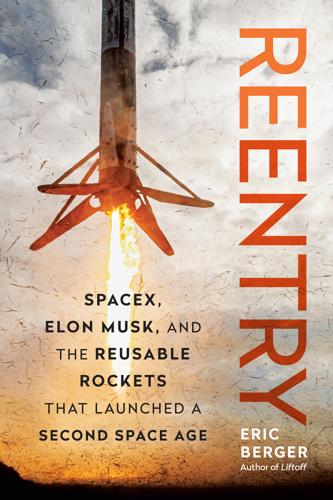
Reentry: SpaceX, Elon Musk, and the Reusable Rockets That Launched a Second Space Age
by
Eric Berger
Published 23 Sep 2024
PHOTO CREDIT: ROGER CARLSON The Crew Dragon flown in Demo-1 is recovered at sea. | PHOTO CREDIT: ROGER CARLSON Dragon from the C1 mission hanging in the SpaceX factory. | PHOTO CREDIT: STEVE JURVETSON The Dragon capsule used for the Crew-3 mission at Kennedy Space Center. | PHOTO CREDIT: NASA Bob Behnken, left, and Doug Hurley inside Crew Dragon during training. | PHOTO CREDIT: NASA SpaceX investor Steve Jurvetson, left, with Elon Musk at the McGregor Dairy Queen. | PHOTO CREDIT: STEVE JURVETSON The Falcon 9 used for flight six, at Vandenberg Air Force Base in 2013, with the CASSIOPE satellite. | PHOTO CREDIT: HANS KOENIGSMANN ACKNOWLEDGMENTS This was a difficult book to write.
…
What once seemed impossible no longer does. Humans belong among the stars. The barriers are falling away. The future is unknowable, but tantalizing. I don’t want this ride to end. It’s just starting to get good. —Eric Berger SpaceX headquarters in Hawthorne, California. | PHOTO CREDIT: STEVE JURVETSON The business end of the Falcon Heavy rocket that launched NASA’s Psyche mission to the asteroid belt between Mars and Jupiter. | PHOTO CREDIT: NASA Bulent Altan works on Falcon 9 avionics. | PHOTO CREDIT: CATRIONA CHAMBERS Roger Carlson takes a selfie atop the lightning tower with the Falcon 9 below, before its public debut at Cape Canaveral. | PHOTO CREDIT: ROGER CARLSON A Falcon 9 first stage is lifted onto the tripod in McGregor, Texas. | PHOTO CREDIT: CATRIONA CHAMBERS Roger Carlson stayed up all night watching to ensure the crane-dangled engine section didn’t fall. | PHOTO CREDIT: ROGER CARLSON The Falcon 9 first stage passes beneath a wire during its long journey from Texas to Florida in 2009. | PHOTO CREDIT: ROGER CARLSON Falcon 9 first stage strikes a building in Louisiana, November 2009. | PHOTO CREDIT: ROGER CARLSON Falcon 9 going vertical for the first time in January 2009. | PHOTO CREDIT: ROGER CARLSON All of the elements of the first flight-ready Falcon 9 rocket in February 2010. | PHOTO CREDIT: ROGER CARLSON Elon Musk and Chris Thompson in the Falcon 9 flight one control room. | PHOTO CREDIT: ROGER CARLSON Party on the Cocoa Beach pier after Falcon 9 flight one. | PHOTO CREDIT: HANS KOENIGSMANN Tim Buzza, left, shakes hands with Brigadier General Susan Helms, commander of the 45th Space Wing, at the SLC-40 groundbreaking ceremony. | PHOTO CREDIT: TIM BUZZA Employees watch the Falcon 9 1.1 static fire test in September 2013 at Hawthorne. | PHOTO CREDIT: STEVE JURVETSON The first Falcon 9 is worked on at SLC-40. | PHOTO CREDIT: TIM BUZZA After landing, a Falcon 9 sits atop the Just Read the Instructions drone ship. | PHOTO CREDIT: NASA The Grasshopper test vehicle in McGregor, Texas, in October 2012.
…
. | PHOTO CREDIT: HANS KOENIGSMANN Tim Buzza, left, shakes hands with Brigadier General Susan Helms, commander of the 45th Space Wing, at the SLC-40 groundbreaking ceremony. | PHOTO CREDIT: TIM BUZZA Employees watch the Falcon 9 1.1 static fire test in September 2013 at Hawthorne. | PHOTO CREDIT: STEVE JURVETSON The first Falcon 9 is worked on at SLC-40. | PHOTO CREDIT: TIM BUZZA After landing, a Falcon 9 sits atop the Just Read the Instructions drone ship. | PHOTO CREDIT: NASA The Grasshopper test vehicle in McGregor, Texas, in October 2012. The streak in the sky to the right is the CRS-1 Dragon spacecraft. | PHOTO CREDIT: DENNIS UNDERWOOD Robb Kulin standing in front of the landed first stage after the ORBCOMM-2 launch. | PHOTO CREDIT: HANS KOENIGSMANN A view of the Falcon 9 control room after the ORBCOMM-2 launch in December 2015. | PHOTO CREDIT: RICKY LIM Kathy Lueders celebrates Demo-2 docking with the International Space Station. | PHOTO CREDIT: NASA Hans Koenigsmann and Kathy Lueders hug at Demo-2. | PHOTO CREDIT: NASA Matt Desch, hand on chest, watches Iridium-1 launch in 2017. | PHOTO CREDIT: MATT DESCH View of the CRS-3 Dragon spacecraft after being mated to the Falcon 9 rocket. | PHOTO CREDIT: HANS KOENIGSMANN Kevin Mock leads the Dragon recovery team back to the improvised barge after its first test flight in 2010. | PHOTO CREDIT: SPACEX The perilous crossing from the Gladys S to the barge.
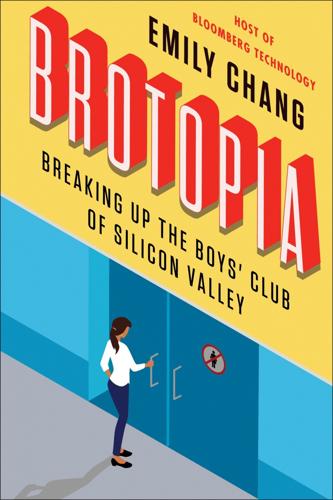
Brotopia: Breaking Up the Boys' Club of Silicon Valley
by
Emily Chang
Published 6 Feb 2018
Although Trump won the election, many women, it seems, became furious and emboldened, and 2017 turned into a watershed year, with more women coming forward daily, shining a spotlight on men who had grossly overstepped. In Silicon Valley, the scandals were just as serious. Dozens of women made claims of unwanted advances by high-profile men in technology, who finally had to face the consequences of their actions. Venture capitalists Justin Caldbeck, Dave McClure, and Steve Jurvetson all exited their own funds amid allegations of sexual assault, harassment, or misconduct. Many of their accusers—and victims—were female entrepreneurs. I reported the accounts of multiple women who accused Shervin Pishevar—a prominent tech investor and major Democratic party donor—of sexual harassment and assault.
…
You hear people say, ‘Well, he groped her, but it’s not that bad.’ Well, it is that bad.” Toward the end of the summer of 2017, the venture capital firm DFJ (originally named Draper Fisher Jurvetson) launched an independent investigation into alleged misconduct by one of its co-founders, Steve Jurvetson, a longtime friend of Elon Musk, and a Tesla and SpaceX investor. Then, in October, female entrepreneur Keri Krukal publicly posted on Facebook: “Women approached by a founding partner of Draper Fisher Jurvetson should be careful. Predatory behavior is rampant.” Shortly thereafter, Jurvetson left the firm and took a leave of absence from the boards of Tesla and SpaceX.
…
In June 2017, one young woman—let’s call her Jane Doe—received a Paperless Post invite for “a party on the edge of the earth.” The invite requested “glamazon adventurer, safari chic and jungle tribal attire” for the party, to be hosted at “Casa Jurvey by the Sea”—the home of venture capitalist Steve Jurvetson in the resort beach town of Half Moon Bay, south of San Francisco. It turned out that this was the afterparty for his venture capital firm, DFJ’s Big Think “unconference,” an exclusive gathering for folks in the tech industry. But two invites went out for the same event, a moody, provocative Paperless Post invite, tiger and all, and then a separate, official email from Jurvetson’s firm.

Prediction Machines: The Simple Economics of Artificial Intelligence
by
Ajay Agrawal
,
Joshua Gans
and
Avi Goldfarb
Published 16 Apr 2018
Also, we thank our colleagues for discussions and feedback, including Nick Adams, Umair Akeel, Susan Athey, Naresh Bangia, Nick Beim, Dennis Bennie, James Bergstra, Dror Berman, Vincent Bérubé, Jim Bessen, Scott Bonham, Erik Brynjolfsson, Andy Burgess, Elizabeth Caley, Peter Carrescia, Iain Cockburn, Christian Catalini, James Cham, Nicolas Chapados, Tyson Clark, Paul Cubbon, Zavain Dar, Sally Daub, Dan Debow, Ron Dembo, Helene Desmarais, JP Dube, Candice Faktor, Haig Farris, Chen Fong, Ash Fontana, John Francis, April Franco, Suzanne Gildert, Anindya Ghose, Ron Glozman, Ben Goertzel, Shane Greenstein, Kanu Gulati, John Harris, Deepak Hegde, Rebecca Henderson, Geoff Hinton, Tim Hodgson, Michael Hyatt, Richard Hyatt, Ben Jones, Chad Jones, Steve Jurvetson, Satish Kanwar, Danny Kahneman, John Kelleher, Moe Kermani, Vinod Khosla, Karin Klein, Darrell Kopke, Johann Koss, Katya Kudashkina, Michael Kuhlmann, Tony Lacavera, Allen Lau, Eva Lau, Yann LeCun, Mara Lederman, Lisha Li, Ted Livingston, Jevon MacDonald, Rupam Mahmood, Chris Matys, Kristina McElheran, John McHale, Sanjog Misra, Matt Mitchell, Sanjay Mittal, Ash Munshi, Michael Murchison, Ken Nickerson, Olivia Norton, Alex Oettl, David Ossip, Barney Pell, Andrea Prat, Tomi Poutanen, Marzio Pozzuoli, Lally Rementilla, Geordie Rose, Maryanna Saenko, Russ Salakhutdinov, Reza Satchu, Michael Serbinis, Ashmeet Sidana, Micah Siegel, Dilip Soman, John Stackhouse, Scott Stern, Ted Sum, Rich Sutton, Steve Tadelis, Shahram Tafazoli, Graham Taylor, Florenta Teodoridis, Richard Titus, Dan Trefler, Catherine Tucker, William Tunstall-Pedoe, Stephan Uhrenbacher, Cliff van der Linden, Miguel Villas-Boas, Neil Wainwright, Boris Wertz, Dan Wilson, Peter Wittek, Alexander Wong, Shelley Zhuang, and Shivon Zilis.
…
The technology was both powerful and general purpose, creating significant value across a wide range of applications. We set to work understanding what it meant in economics terms. We knew that AI would be subject to the same economics as any other technology. The technology itself is, simply put, amazing. Early on, famed venture capitalist Steve Jurvetson quipped: “Just about any product that you experience in the next five years that seems like magic will almost certainly be built by these algorithms.”3 Jurvetson’s characterization of AI as “magical” resonated with the popular narrative of AI in films like 2001: A Space Odyssey, Star Wars, Blade Runner, and more recently Her, Transcendence, and Ex Machina.
…
The Independent, May 1, 2014, http://www.independent.co.uk/news/science/stephen-hawking-transcendence-looks-at-the-implications-of-artificial-intelligence-but-are-we-taking-9313474.html. 2. Paul Mozur, “Beijing Wants A.I. to Be Made in China by 2030,” New York Times, July 20, 2017, https://www.nytimes.com/2017/07/20/business/china-artificial-intelligence.html?mcubz=0&_r=0. 3. Steve Jurvetson, “Intelligence Inside,” Medium, August 9, 2016, https://medium.com/@DFJvc/intelligence-inside-54dcad8c4a3e. 4. William D. Nordhaus, “Do Real-Output and Real-Wage Measures Capture Reality? The History of Lighting Suggests Not,” Cowles Foundation for Research in Economics, Yale University, 1998, https://lucept.files.wordpress.com/2014/11/william-nordhaus-the-cost-of-light.pdf. 5.

Elon Musk
by
Walter Isaacson
Published 11 Sep 2023
See Musk, Justine Wilson Wilson, Vivian Jenna (EM’s daughter), 217 birth of, 169 family gatherings (2022) and, 588 gender transition of, 343, 418–19, 467 rift with EM, 344, 408–9, 419, 467 Wood, Lin, 290 Woods, James, 567 Woodward, Bob, 573 Woolway, Mark, 92 World War II, 123 Wozniak, Steve, 7, 56, 133 Wright, Ian, 129, 130, 134 Wyche, Vanessa, 475 X.AI, 244, 605–6 X.com, 73, 74–79, 81, 87, 447, 507, 509, 560 Xi Jinping, 314 Yaccarino, Linda, 613 Yelp, 85 Young Frankenstein, 485 Zaman, Tim, 499 Zambia, 13 Zaslav, David, 580 Zelenskyy, Volodymyr, 428, 432 Zeroth Law, 31 Zilis, Shivon (EM’s co-parent), 412 Autopilot project and, 333, 334 business principles and, 426–27 EM’s Austin home plans and, 472 EM’s children with, 412, 413–15, 467–68, 599, 603 on EM’s personality, 441–42 Neuralink and, 400–401, 402, 414, 468, 497, 562, 563 pregnancy of, 413–14, 416 twins name change and, 467 Twitter and, 427 video games and, 425, 426, 427 work strategy setting and, 426–27 Zip2, 61–67, 70 development of, 61–62 EM’s management style and, 64–65 EM’s nostalgia for, 498 idea for, 58–59 investor meetings, 62–63 marketing of, 63–64, 65 sale of, 60, 65, 70 Sorkin as CEO, 63, 65 Zubrin, Robert, 92 Photo Credits Page 1 Courtesy of Maye Musk Page 9 Top and bottom left: Courtesy of Maye Musk Right: Courtesy of Elon Musk Page 15 Photos courtesy of Maye Musk Page 21 Courtesy of Maye Musk Page 22 Top left: Courtesy of Maye Musk Top right Courtesy of Peter Rive Bottom: Courtesy of Kimbal Musk Page 28 Courtesy of Maye Musk Page 29 Photos courtesy of Maye Musk Page 35 Courtesy of Maye Musk Page 40 Photos courtesy of Maye Musk Page 43 Courtesy of Maye Musk Page 44 Photos courtesy of Maye Musk Page 49 Top: Courtesy of Robin Ren Bottom: Courtesy of Maye Musk Page 54 Courtesy of Maye Musk Page 59 Courtesy of Maye Musk Page 60 Top: Courtesy of Maye Musk Bottom: CNN/YouTube.com Page 68 Photos courtesy of Maye Musk Page 72 Courtesy of Maye Musk Page 73 Paul Sakuma/AP Page 82 Top: Robyn Twomey/Redux Bottom left: David Paul Morris/Bloomberg via Getty Images Bottom right: Simon Dawson/Bloomberg via Getty Images Page 90 Photos courtesy of Adeo Ressi Page 97 Photos courtesy of Adeo Ressi Page 102 Courtesy of Kimbal Musk Page 106 Gregg Segal Page 111 Courtesy of SpaceX Page 118 Courtesy of Gwynne Shotwell Page 124 Top: Steve Jurvetson/Wikimedia Commons Bottom: Erin Lubin Page 131 Courtesy of Tesla Page 144 Photos courtesy of Hans Koenigsmann Page 149 Photos courtesy of Hans Koenigsmann Page 155 Courtesy of Tim Watson Page 162 Nicki Dugan Pogue/Wikimedia Commons Page 168 Lauren Greenfield/Institute Page 172 Nick Harvey/WireImage/Getty Images Page 175 Courtesy of Hans Koenigsmann Page 178 Courtesy of Hans Koenigsmann Page 182 Photos courtesy of Hans Koenigsmann Page 190 Courtesy of Navaid Farooq Page 195 Left and right: Steve Jurvetson/Wikipedia Commons Page 203 Official White House Photo by Chuck Kennedy Page 209 Courtesy of Christopher Stanley Page 213 Courtesy of Talulah Riley Page 217 Top: Courtesy of YouTube.com Bottom: Courtesy of Sam Teller Page 223 Courtesy of Trung Phan/Twitter Page 229 Courtesy of Jehn Balajadia Page 235 Photos courtesy of Navaid Farooq Page 239 YouTube.com Page 260 Top left and right: Courtesy of Amber Herd Bottom left: Gianluigi Guercia/AFP via Getty Images Bottom right: Brendan Smialowski /AFP via Getty Images Page 267 Courtesy of Omead Afshar Page 275 Courtesy of Sam Teller Page 276 Top left: courtesy of Omead Afshar Top right and Bottom left: courtesy of Sam Teller Bottom right: Courtesy of Jehn Balajadia Page 286 Courtesy of Omead Afshar Page 287 Photos courtesy of Sam Teller Page 295 Top: YouTube.com Bottom: Ryan David Brown/The New York Times/Redux Page 305 Left: Courtesy of Grimes Right: Amy Sussman/WWD/Penske Media/Getty Images Page 312 Courtesy of Robin Ren Page 315 Courtesy of Sam Teller Page 325 Right: Courtesy of Bill Riley Page 340 Top left: Courtesy of Maye Musk Bottom: Martin Schoeller/August Page 347 Top: Courtesy of SpaceX Bottom: Courtesy of Jehn Balajadia Page 353 Left: Courtesy of Blue Origin Right: Courtesy of Elon Musk Page 358 Top left: Courtesy of Andy Krebs Bottom left: Courtesy of Lucas Hughes Right: Nic Ansuini Page 376 Left: Will Heath/NBC/NBCU Photo Bank via Getty Images Right: courtesy of Grimes Page 382 Top: Courtesy of SpaceX Bottom: Courtesy of Kim Shiflett /NASA Page 387 Bottom: Nic Ansuini Page 393 Courtesy of Tesla Page 398 Courtesy of Neuralink Page 435 Imagine China/AP Page 440 Left: Kevin Dietsch/Getty Images Right: Andrew Harrer/Bloomberg via Getty Images Page 466 Bottom: Courtesy of Jared Birchall Page 482 Photos courtesy of Tesla Page 488 Top: The PhotOne/BACKGRID Bottom: Marlena Sloss/Bloomberg via Getty Images Page 500 Courtesy of Milan Kovac Page 501 Top: Courtesy of Omead Afshar Page 506 Top: Courtesy of Elon Musk/Twitter Bottom: Courtesy of Jehn Balajadia Page 511 Right: Courtesy of Jehn Balajadia Page 523 Top left: Elon Musk/Twitter Top right: Courtesy of Twitter Bottom left: David Paul Morris/Bloomberg via Getty Images Bottom right: Duffy-Marie Arnoult/WireImage/Getty Images Page 532 Top: Courtesy Elon Musk/Twitter Bottom: Courtesy of Maye Musk Page 546 Top: Courtesy of Christopher Stanley Page 561 Top: Courtesy of Neuralink Bottom: Courtesy of Jeremy Barenholtz Page 565 Top: Wikimedia Commons Bottom: Samantha Bloom Page 581 Photos courtesy of James Musk Page 592 Courtesy of Dhaval Shroff Front Endpaper: Courtesy of SpaceX Back Endpaper: Courtesy of Tesla, Inc.
…
In Silicon Valley at the time, there was a tight-knit and hard-partying community of young entrepreneurs and tech bros who had become startup millionaires, and Musk had become one of its stars. He enlisted some of his friends to invest, including Antonio Gracias, Sergey Brin, Larry Page, Jeff Skoll, Nick Pritzker, and Steve Jurvetson. But board members encouraged him to broaden the network and seek financing from one of the major venture capital firms, such as those that gilded Palo Alto’s Sand Hill Road. That would provide not just money but a stamp of legitimacy on Tesla. First he approached Sequoia Capital, which had become king of the valley by being early backers of Atari, Apple, and Google.
…
“We’re going,” Musk said. “If it’s going to explode, we might as well walk through burning debris. How often do you get to do that?” Everyone laughed nervously and followed along. It was like a set from a Ridley Scott movie, with craters in the ground, the scrub grass on fire, and charred pieces of metal. Steve Jurvetson asked Musk if they could grab some pieces as souvenirs. “Sure,” he said, collecting some himself. Antonio Gracias tried to cheer everyone up by saying how the best lessons in life come from failures. “Given the options,” Musk replied, “I prefer to learn from success.” It was the beginning of a bad stretch not just for SpaceX but for the entire industry.

Alpha Girls: The Women Upstarts Who Took on Silicon Valley's Male Culture and Made the Deals of a Lifetime
by
Julian Guthrie
Published 15 Nov 2019
The start-up was the brainchild of Matthew Klein, a self-described “hacker and nincompoop” who at six foot seven was so consumed with his thoughts that he often ran smack into low branches and doorjambs. He had gone to Yale and Stanford, where he programmed a payment mechanism into Shareware, a proprietary software that was free but asked users to pay by the honor system. Klein, who didn’t have faith in the honor system, had landed $1 million in funding for Release from venture capitalists Steve Jurvetson and Tim Draper. Klein found Theresia through another Stanford business school classmate and Release employee, Mark Benning, a former star hockey player at Harvard. The company’s fourth employee was Li An, a Chinese immigrant who spoke limited English but was fluent in engineering. An had responded to a flyer that Klein taped to a lamppost on the Stanford campus.
…
A business school friend, Robin Richards Donohoe, had gone to work for the well-known VC Bill Draper, helping him launch the world’s first venture fund in India. Donohoe was now a partner and loved her job. Jennifer Fonstad, who had been a year ahead of Theresia at Bain in Boston, had become a partner at Draper Fisher Jurvetson a year after joining. (Steve Jurvetson and Tim Draper had backed Release.) Fonstad had told Theresia stories of working on Mitt Romney’s 1994 Senate campaign against incumbent Ted Kennedy. Fonstad had traveled with Romney, a founder of Bain Capital, and listened to his stories about building businesses from the ground up, including Staples, where he had been the first investor.
…
New allegations of abuse and bad behavior seemed to make headlines every day. Everyone at the Broadway Angels table knew someone who was accused of misconduct or worse. Shervin Pishevar, the Menlo partner and Uber investor who had moved into Sonja’s old office, was being accused of sexual harassment and assault by a handful of women. He has denied the allegations. Steve Jurvetson, a wunderkind venture investor who had funded Theresia’s start-up, Release Software—and was a friend—had left his firm DFJ (where Jennifer Fonstad was a partner) following allegations that he hosted sex and drug parties and had multiple affairs, including with female entrepreneurs. (Jurvetson has also denied the allegations.)
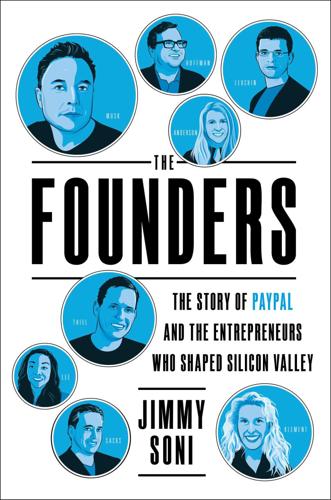
The Founders: The Story of Paypal and the Entrepreneurs Who Shaped Silicon Valley
by
Jimmy Soni
Published 22 Feb 2022
After multiple failed pitches for venture capital, Global Link secured a $3.5-million investment round led by Mohr Davidow Ventures. In fundraising, yet again, the brothers’ greenness showed. “They were originally asking for a ten-thousand-dollar investment for 25 percent of their company,” investor Steve Jurvetson later shared with author Ashlee Vance for his biography of Musk. “That is a cheap deal! When I heard about the three-million-dollar investment, I wondered if Mohr Davidow had actually read the business plan.” Musk was astonished, too. “I thought they were on crack,” he said to a journalist two years later.
…
But Nosek wanted to go beyond the competition, so he began considering how free money could grow the payments network—not just lure individuals. The seed was planted in Nosek’s college years. In 1996, Hotmail had added the phrase “Get your FREE Web-based email…” with a sign-up link to the signature line of every email. That link pulled in hundreds of thousands of new users in record time. Two Hotmail investors, Tim Draper and Steve Jurvetson, wrote about the idea in a piece published on January 1, 1997, for a newsletter popular among early technology enthusiasts—including then-undergraduate Nosek. “Attention is finite,” Draper and Jurvetson wrote. “Rising above the noise of a thousand voices requires creativity. Shouting is not very creative.
…
We discuss the advantages and disadvantages of using a PDA to make secure payments as opposed to using a smartcard or a desktop PC,” https://citeseerx.ist.psu.edu/viewdoc/summary?doi=10.1.1.40.770. “I don’t know”: Author interview with Max Levchin, June 29, 2018. But despite the temptation: Author interviews with Steve Jurvetson (April 8, 2019) and Luke Nosek (October 28, 2018). “John was a”: Author interview with Scott Banister, July 25, 2018. “the unsung”: Author interview with Max Levchin, October 30, 2018. “had bought”… “tumultuous day”: Author interview with John Malloy, October 29, 2018. 6. Hosed “I’m like”: Author interview with Elon Musk, January 19, 2019.
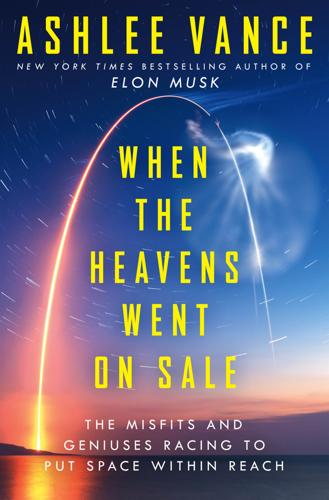
When the Heavens Went on Sale: The Misfits and Geniuses Racing to Put Space Within Reach
by
Ashlee Vance
Published 8 May 2023
“They proved what they needed to prove,” Atchison said. “Which was that consumer electronics components could handle a real-world rocket ride.” The Marshall unreality field also activated during that trip to the desert. One of Silicon Valley’s best-known amateur rocket enthusiasts is the venture capitalist Steve Jurvetson. A longtime friend of Atchison, Jurvetson had been testing his own rockets when he caught wind of what the NASA Ames engineers were up to. Jurvetson had been one of the earliest investors in SpaceX and quickly began to see the PhoneSat effort as perhaps the start of the next major shift in commercial space.
…
Meanwhile, Planet set up shop in the center of San Francisco. The Planet founders had been paying for their experiments at the Rainbow Mansion out of their pocket but now needed to raise money as their expenses mounted. Remembering their time in the Black Rock Desert, Marshall and Boshuizen decided to call the venture capitalist Steve Jurvetson. To their great surprise and joy, he agreed to cut Planet its first check. “We raised three million dollars at the start, and Steve put in two million of that,” Marshall said. “To his credit, he saw it, and he placed the bet.”* Along with the new job, Marshall and the Schinglers changed their living conditions.
…
They could be improved and updated just like consumer computers and smartphones. Once again, Planet helped erode years of traditional thinking that satellites were fragile objects that should be left alone once they were in space. The first couple of launches boosted investors’ confidence in the young company. In mid-2013, Planet raised $13 million more in funding. Steve Jurvetson once again led the investment round, which was joined by the venture capitalist Peter Thiel, Eric Schmidt, and others. Planet used the money to build a fleet of twenty-eight new Doves. It put those into space in 2014 by hitching a ride on a cargo rocket bound for the International Space Station.
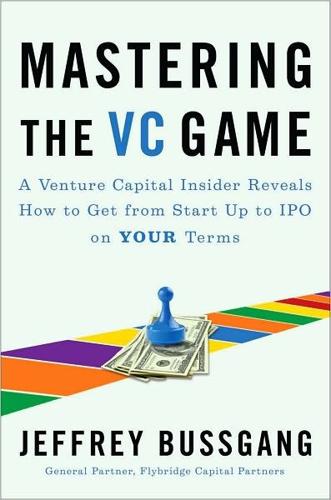
Mastering the VC Game: A Venture Capital Insider Reveals How to Get From Start-Up to IPO on Your Terms
by
Jeffrey Bussgang
Published 31 Mar 2010
“It’s an illness, I think. We all try to express some creativity because, as a general matter, the job of the VC involves creativity only by proxy.” At Stanford, David made friends with two seemingly opposing types of characters. He rubbed shoulders with students who later became venture capitalists, such as Steve Jurvetson, now a general partner at Draper Fisher Jurvetson (DFJ). “Steve was the computer coordinator in our dorm,” David said, “the guy who was in charge of fixing the computers when they were broken—basically the resident nerd.” There were also would-be entrepreneurs roaming David’s Stanford dorm, including Jerry Yang, one of the founders of Yahoo!
…
IDG Ventures China IDG Ventures Vietnam Index Venture India, venture capital activities Initial public offering (IPO) average age of company for Baidu Constant Contact process downside of future outlook for process, Constant Contact example sale following IPO selling company after Sirtris Pharmaceuticals Inside round Intel Intellectual property Internet bubble, bursting of Internet companies, boom and bust cycle Intrapreneurship IPO. See Initial public offering (IPO) Jackson, Randy Jarvis, Jeff JMI Equity Jobs, Steve Jurvetson, Steve Kaiser, Bill Karlen, Jon blog of at Flybridge and Zing Systems deal See also Flybridge Capital Partners Kawasaki, Guy Khosla, Vinod Kidd, Greg Kirsner, Scott Kleiner Perkins Caulfield & Byers firms, analysis of and Upromise Kopelman, Josh blog of First Round, management of Langer, Robert background information Langer Lab patents held and Terry McGuire Leighton, Tom Lewin, Daniel Li, Robin Limited partners, types/roles of LinkedIn development of as networking tool Liquidation preference defined participation feature preference calculation Lynch, Peter McGovern, Pat McGuire, Terry and Akamai Technologies background information on future of VC as NVCA chairman VC activities of on VC business on VC/entrepreneur relationship McNealy, Scott Malik, Om Maniatis, Thomas Marquardt, David Medschool.com Mendelson, Jason Microsoft Morgan, Howard background information blog of early-stage strategy of on future of VC on passion of entrepreneur pitch, time allowed Moses, Dr.

Exponential Organizations: Why New Organizations Are Ten Times Better, Faster, and Cheaper Than Yours (And What to Do About It)
by
Salim Ismail
and
Yuri van Geest
Published 17 Oct 2014
Interviewed C-Level executives from several dozen Fortune 200 companies with our survey and frameworks. Interviewed or researched ninety top entrepreneurs and visionaries including Marc Andreessen, Steve Forbes, Chris Anderson, Michael Milken, Paul Saffo, Philip Rosedale, Arianna Huffington, Tim O’Reilly and Steve Jurvetson. Investigated the characteristics of the one hundred fastest growing and most successful startups across the world, including those that comprise the Unicorn Club (Aileen Lee’s name for the billion-dollar market cap startup group), to tease out commonalities the companies used to scale. Reviewed presentations and gleaned key insights from core faculty members at Singularity University regarding the acceleration they are seeing at the edges of their fields and how that acceleration might impact organizational design.
…
For established companies wishing to go exponential, the character and courage of the board of directors and executive row will often prove more decisive than their competence. Perhaps the best example of such leadership today is Elon Musk. With the support of a strong board and visionary investors like Steve Jurvetson, Musk’s tenacity and drive have carried him through extreme tests. Tesla, now ten years old, saw its growth level off in 2011 and 2012, and was on the verge of bankruptcy and layoffs for its five hundred employees. After an injection of funds from Jurvetson’s DFJ fund, the company launched the Tesla S, which was named Car of the Year in 2013 by Motor Trend magazine and declared the safest car ever built.
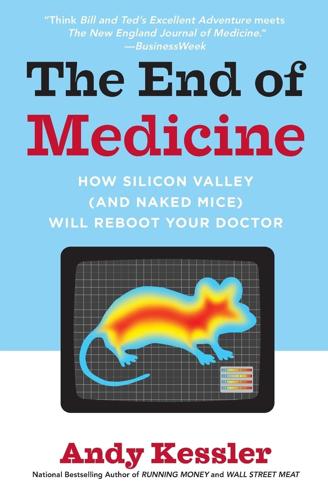
The End of Medicine: How Silicon Valley (And Naked Mice) Will Reboot Your Doctor
by
Andy Kessler
Published 12 Oct 2009
It’s a daily ritual for venture capitalists—the khaki patrol is out early, snagging the tables and booths with the best views of the room so they can spy on who is talking to whom and have something to gossip about with their venture partners over lunch. I come here every so often, but it seems that the same folks—hey, there’s Steve Jurvetson doing another nanotech deal—are here every time I come, almost no exceptions. Over the years, I’ve gotten to know Jamis, the owner, proprietor, and self-described Pancake Guy, and he made sure I had a table with a view of the viewers. “Hey, sorry to be late. Don Listwin,” he said as we shook hands and he slipped into the booth.
…
There was a National Nanotechnology Initiative. I figured it was a boondoggle, especially when I noticed that Mike Honda, a House member from Silicon Valley, was the cosponsor. $3.7 billion over four years—finally some pork for the Valley. At the signing ceremony were bunch of folks I knew. Venture guys Steve Jurvetson—hey, maybe his table was available at Buck’s—and Kleiner’s Floyd Kvamme. I was going to track them down, but ended up running into another guy who was in the Oval Office—Josh Wolfe from Lux Capital. We found common ground—we both were born in Brooklyn and schooled high above Cayuga’s waters. “They slice, they dice?
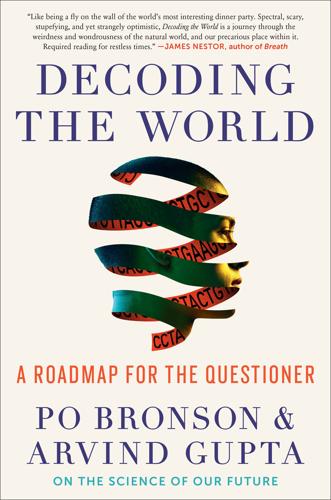
Decoding the World: A Roadmap for the Questioner
by
Po Bronson
Published 14 Jul 2020
With the slightest of hesitation she popped it in her mouth. The entire room held its breath. We could hear her chew. You could see a wave of relief spread over her face from forehead to chin as her lips spread into a smile. “It’s good,” she said with genuine surprise. And an entire future industry breathed out in relief. Steve Jurvetson, who invested in SpaceX, led their series A round of $16 million. He was joined by Bill Gates, and Tyson, the largest meat processor in the country. The meat industry had declared, with hard cash: If you cannot beat them, join them. They are now worth north of half a billion dollars. In the rest of the country, veggie burgers became the focal point of megatrends colliding.
…
Aaron VanDevender, Adam D’Augelli, Adam Draper, Adam Reineck, Alaa Saleh Halawa, Alan Boehme, Alan Chang, Alexander Kamb, Alex Lorestani, Amy Muhl, Andrew Hessel, Armen Vidian, Asish Xavier, Augustin Ku, Bill Gates, Bob Nelson, Brian Cork, Brian Schreier, Bruce Freidrich, Bruce Jenett, Bryan Chang, Calvin Nguyen, Celestine Johnson, Charly Chalawan, Clem Fortman, Cooper Rinzler, Costa Yiannoulis, Dan Phillips, Dan Widmaier, Dana White, David Friedberg, David Helgason, Dariush Mozaffarian, Darrin Crisitello, David Aycan, David Eagleman, Drew Endy, Dror Berman, Dylan Morris, Ela Madej, Elad Gil, Elliot Waldron, Eric Scott, Erik Moga, Francisco Gimenez, George Church, Gopi Punukollu, Harsh Patel, Hemant Taneja, Howard Shultz, Ian Rountree, Isabella Maria Jonsdottir, Jim Collins, Jake Moritz, Jason Camm, Jason Okutake, Jenny Rooke, Jeff Bezos, Jeff Harbach, Jennifer Cochran, Jennifer Doudna, Jeremy Kranz, Jerry Zeldis, Joe Luttwak, John Cumbers, John Yu, Josko Bobanovic, Jude Gomila, Kevin Hartz, Khaled Alwaleed, Kinkead Reiling, Laura Smoliar, Leonardo Teixeira, Lior Susan, Lisa Rich, Maria Gotsch, Maria Mitchell, Maria Soloveychik, Mary Wheeler, Mark Goldstein, Matias Mosse, Matias Muchnik, Matías Peire, Matias Viel, Matt Ocko, Melinda Gates, Michael Moritz, Michael Aberman, Mira Chaurushiya, Nabeel Hyatt, Nick Rosa, Nico Berman, Oleg Nodelman, Paolo Riauto, Paul Graham, Peter Kim, Reid Hoffman, Ricardo Gomes, Richard Branson, Roger Wyse, Rohan and Taj, Rohit Sharma, Ron Shigeta, Rosie Wardle, Ryan Bethencourt, Scott Banister, Scott Nolan, Seth Bannon, Shahin Farshchi, Shirl Buss, Solina Chau, Steve Jurvetson, Steve Kim, Steinnun Hjartar, Steve Sanger, Taylor Sittler, Tim Brown, Tim Draper, Timothy Lu, Tom Aiello, Tom Baruch, Tom Chi, Tony Envin, Uma Valeti, Victoria Slivkoff, Vijay Pande, Vinod Khosla and Whitney Mortimer. Thank you. And to all our alumni putting their future on the line for a greater good, inspiring us to do even more every day.
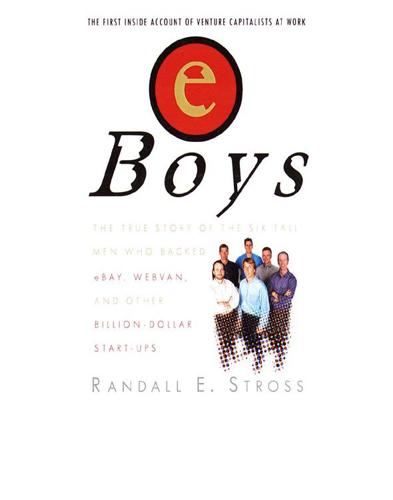
eBoys
by
Randall E. Stross
Published 30 Oct 2008
Perhaps that was the case in the early nineteenth century, but by the late twentieth century, the risk of failure was only abstractly part of the equation. Consequently, entrepreneurship had a glow that was not entirely deserved, as it was the success stories that drew the eye. All but invisible were those who tried and failed, some of whom rebounded emotionally and professionally, and some of whom did not. Steve Jurvetson, a young venture capitalist with Draper Fisher Jurvetson in Redwood City, was more aware than most venture guys of the existence of those who did not bounce back; his wife happened to be a psychiatrist, among whose clients were the would-be entrepreneurs who had failed (which in the Valley was pardonable) but who had not maintained their stride (which was not).
…
Madden, “The New VCs,” Red Herring, November 1999. 4: Accidents Happen he hadn’t spent anything: “www.ebay.philanthropy,” San Jose Mercury News, 23 April 1999. 5: Don’t Get Screwed “can in no case stigmatize”: Alexis de Tocqueville, Democracy in America, J. P. Mayer, ed. (Garden City, N.Y.: Anchor Books, 1969), p. 622. more aware than most: For a profile of Steve Jurvetson, see Po Bronson, “Surfing on the Slippery Skin of a Bubble,” New York Times Magazine, 20 June 1999. Jurvetson also makes an appearance in Bronson’s account of Hotmail’s success in The Nudist on the Late Shift and Other True Tales of Silicon Valley (New York: Random House, 1999), pp. 78–97. For a look at Jurvetson’s two partners, Tim Draper and John Fisher, through the eyes of one entrepreneur, see Gary Rivlin’s “This Guy Needs Two Million Now; These Guys Have It; Let the Games Begin,” San Francisco Focus, August 1997.
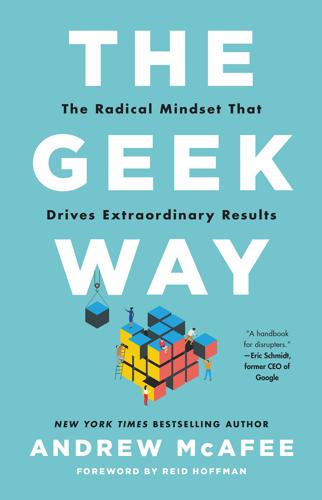
The Geek Way: The Radical Mindset That Drives Extraordinary Results
by
Andrew McAfee
Published 14 Nov 2023
Competitors that can’t reduce their vulnerability by adopting the great geek norm of speed risk finding themselves feeling much like one of John Boyd’s opponents in a dogfight high over the Nevada desert: bewildered at how quickly their position has deteriorated, and confronting a decisive loss. Venture capitalist Steve Jurvetson told me flatly that “any company that thinks they’re not a software company is not long for this world, because the agile way we’ve learned to build software is becoming the agile way we build everything. I sometimes feel like I have a sixth sense. I can see dead companies. They don’t know they’re dead, but they’re dead because they’re not responsive enough.
…
If you came across something you liked in these pages, chances are excellent that one of them is responsible for it. I interviewed a bunch of alpha geeks throughout this project, and I’m grateful to all of them. The preceding pages contain quotes from my conversations with (in alphabetical order) Nikesh Arora, Carl Bass, Patrick Collison, Sam Corcos, Liane Hornsey, Drew Houston, Steve Jurvetson, Vinod Khosla, James Manyika, Will Marshall, Satya Nadella, Yamini Rangan, Eric Schmidt, Sebastian Thrun, Hal Varian, and Ardine Williams. Don Sull shared data from his fascinating “Culture 500” project with me, which was generous far beyond normal professional courtesy. Reid Hoffman took our conversation one big step further by offering to write a foreword; I don’t quite know how to thank him.
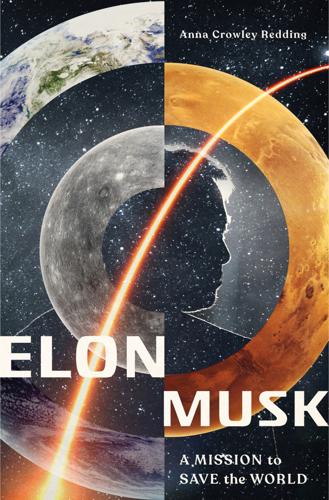
Elon Musk: A Mission to Save the World
by
Anna Crowley Redding
Published 1 Jul 2019
And his face shows the evidence of his lifelong interest in pouring liquids from one beaker into another—after an explosion sent flying glass shards into his cheek, leaving a nasty scar behind. J. B. Straubel (right) receives Deloitte’s Technology Fast 500 recognition for Tesla being number one on Deloitte’s list of fastest-growing technology companies in 2012. (Photo by Steve Jurvetson.) Martin was named CEO. Marc became the chief financial officer, and J. B. was chief technology officer. As Tesla’s largest stakeholder, Elon was made chairman of the board. Ian Wright was also a cofounder. Marc and Martin brought him in, but he would only stay for a year. After leaving Tesla, he has continued to work in the electric vehicle industry.
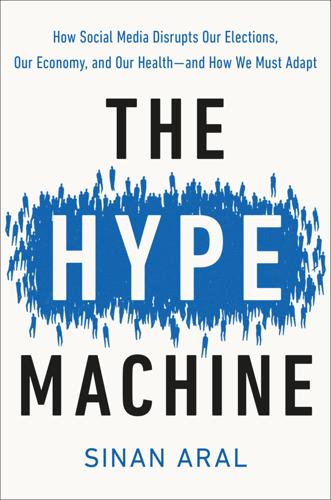
The Hype Machine: How Social Media Disrupts Our Elections, Our Economy, and Our Health--And How We Must Adapt
by
Sinan Aral
Published 14 Sep 2020
Every email sent to a colleague or friend doubled as an advertisement for Hotmail, and the link in the signature line contained a direct path to product adoption. It launched on July 4, 1996. Within six months Hotmail had a million users. Five weeks later it had 2 million users and was adding more than 20,000 new users a day with little to no paid advertising. As Steve Jurvetson, managing director of the VC firm Draper Fisher Jurvetson, Hotmail’s lead investor, wrote: “We were amazed at how quickly Hotmail spread over the global network. The rapid adoption pattern was that of a network virus. We would notice the first user from an overseas university town, and then the number of subscribers from that region would rapidly proliferate.
…
viral characteristics: Jonah Berger, Contagious: Why Things Catch On (New York: Simon & Schuster, 2013). content that evokes emotional arousal: Jonah Berger and Katherine L. Milkman, “What Makes Online Content Viral?,” Journal of Marketing Research 49, no. 2 (2012): 192–205. “We were amazed at how quickly Hotmail spread”: Steve Jurvetson, “What Exactly Is Viral Marketing?,” Red Herring 78 (2000): 110–12. a large-scale randomized experiment on Facebook: Sinan Aral and Dylan Walker, “Creating Social Contagion Through Viral Product Design: A Randomized Trial of Peer Influence in Networks,” Management Science 57, no. 9 (2011): 1623–39. “$527,000 in a month or almost $6.4 million in a year”: Rachel Strugatz, “Bloggers and Digital Influencers Are Reshaping the Fashion and Beauty Landscape,” Los Angeles Times, August 10, 2016.
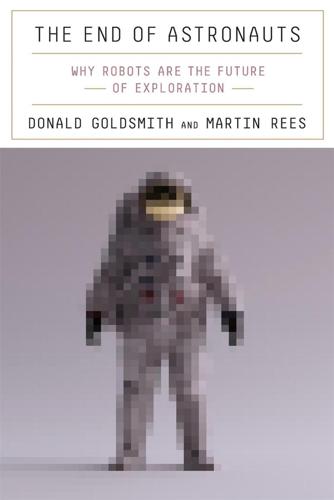
The End of Astronauts: Why Robots Are the Future of Exploration
by
Donald Goldsmith
and
Martin Rees
Published 18 Apr 2022
SpaceX, established by Musk in 2002 to manufacture launch vehicles, has produced the Dragon and Falcon spacecraft, workhorses for NASA’s missions to send supplies, and to send and return astronauts, to the International Space Station. Musk’s new, super-heavy Starship launch system aims for Mars, where, he has said, he would like to die, “just not on impact.” Steve Jurvetson, Musk’s longtime friend and collaborator, has said that Musk believes that by 2035 thousands of rockets will be taking a million people to Mars to create a self-sustaining colony. Musk has repeatedly publicized overly optimistic timelines for his grand projects, including the introduction of Tesla electric cars, but he has overcome numerous setbacks to deliver on his promises and deserves his acclaim.

Our Final Invention: Artificial Intelligence and the End of the Human Era
by
James Barrat
Published 30 Sep 2013
Instead they’ll use ordinary programming and black box tools like genetic algorithms and neural networks. Add to that the sheer complexity of cognitive architectures and you get an unknowability that will not be incidental but fundamental to AGI systems. Scientists will achieve intelligent, alien systems. Steve Jurvetson, a noted technology entrepreneur, scientist, and colleague of Steve Jobs at Apple, considered how to integrate “designed” and “evolved” systems. He came up with a nice expression of the inscrutability paradox: Thus, if we evolve a complex system, it is a black box defined by its interfaces. We cannot easily apply our design intuition to improve upon its inner workings.… If we artificially evolve a smart AI, it will be an alien intelligence defined by its sensory interfaces, and understanding its inner workings may require as much effort as we are now expending to explain the human brain.

Ludicrous: The Unvarnished Story of Tesla Motors
by
Edward Niedermeyer
Published 14 Sep 2019
Even though eliminating buttons and knobs could save automakers massive amounts of money and give their cars a dash of smartphone cool, for most automakers those advantages aren’t worth the risk of an interface that requires drivers to take their eyes off the road. Besides, even Teslas still don’t have the feature that helped smartphones become indispensable: apps. At the reveal of the Model S prototype, Elon Musk told Tesla investor and board member Steve Jurvetson that “we’ve got people, like, writing apps for the car,” but currently there’s no sign of a Tesla app store. Without independent developers coming up with unique software applications for Tesla’s cars, cars will never have the creative and financial engine that made the smartphone what it is today.
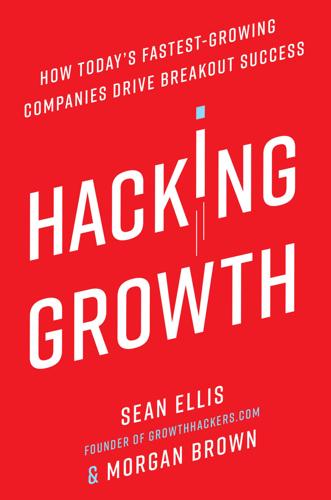
Hacking Growth: How Today's Fastest-Growing Companies Drive Breakout Success
by
Sean Ellis
and
Morgan Brown
Published 24 Apr 2017
In addition to drawing on my knowledge of marketing and sales tactics, I worked with the engineers to utilize technology for what was, to them, a novel purpose: to craft novel methods for finding, reaching, and learning from customers in order to hone our targeting, grow our customer base, and get more value from our marketing dollars. 3. Steve Jurvetson and Tim Draper, “Viral Marketing: Viral Marketing Phenomenon Explained,” January 1, 1997, DFJ blog, accessed September 13, 2016, dfj.com/news/article_26.shtml. 4. Eric M. Jackson, The PayPal Wars: Battles with eBay, the Media, the Mafia, and the Rest of Planet Earth (WND Books: 2012), 35–40. 5.
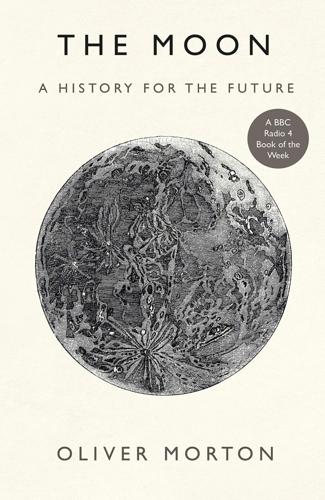
The Moon: A History for the Future
by
Oliver Morton
Published 1 May 2019
A few kilometres closer, on Bay View Boulevard, were the headquarters of Google, which was at the time the sponsor of a $30m set of prizes for landing a rover on the Moon which Moon Express, among others, was trying to win. On the other side of the tracks, in the hills above Stanford, was the home of Steve Jurvetson, a venture capitalist who had been an early backer of Elon Musk’s SpaceX and nurtured his own plans for the Moon. It was at a meeting in that house that the moonbase-siting study I was reading had been conceived. And beneath those hills, in the depths of the San Andreas Fault, the Pacific Plate and the North American Plate were responding to the full Moon’s spring tide, just as they do every month.

Supremacy: AI, ChatGPT, and the Race That Will Change the World
by
Parmy Olson
In January 2017, a few months before DeepMind tried to help shoehorn Google back into China with AlphaGo, Gebru presented the findings of her thesis to an audience of venture capitalists and executives from Silicon Valley. As she clicked through her slides, she explained that AI systems could combine their ability to recognize cars with their ability to make predictions to forecast things like voting patterns or household income. One venture capitalist there, a Tesla investor and friend of Elon Musk named Steve Jurvetson, was stunned, but not for the reasons Gebru was hoping. Think about how powerful this kind of data made Google and the kinds of insights it could make about different neighborhoods or towns. He was so impressed that he posted photos of Gebru’s talk to Facebook. In what was a continuing incongruity in AI, some in the room saw a financial opportunity while others like Gebru saw a danger that needed to be contained.

The Space Barons: Elon Musk, Jeff Bezos, and the Quest to Colonize the Cosmos
by
Christian Davenport
Published 20 Mar 2018
In 2015, Google and Fidelity invested $1 billion in SpaceX, backing another of Musk’s ventures: a bold plan to build a constellation of thousands of small satellites that would swarm over Earth, beaming the Internet to remote parts of the world. SpaceX had gotten so attractive that the company had to actually turn away money, telling Steve Jurvetson, one of Silicon Valley’s most successful venture capitalists and an early backer of SpaceX, to hold off. “There’s so much interest, they can’t take it all,” said Jurvetson. By mid-2017, after raising $350 million in a new round of funding, SpaceX was valued at $21 billion, “making it one of the most valuable privately held companies in the world,” the New York Times reported.

The Future Is Faster Than You Think: How Converging Technologies Are Transforming Business, Industries, and Our Lives
by
Peter H. Diamandis
and
Steven Kotler
Published 28 Jan 2020
, IEEE Micro 37, no. 4: 4–5. “Moore’s Law was not the first”: Kurzweil, “Law of Accelerating Returns.” Apple’s recent A12 Bionic: See: https://www.apple.com/iphone-xs/a12-bionic/. Rose’s Law: Tim Ferriss does a good job overviewing this idea and its history here: https://tim.blog/2018/05/31/steve-jurvetson/. a fifty-quibit computer: Rigetti, author interview. Oxford’s Simon Benjamin: This came from a talk he gave at the Oxford Martin School, February 2016. See: https://www.oxfordmartin.ox.ac.uk/videos/the-dawn-of-quantum-technology-with-prof-simon-benjamin/. over 120 million programs: Rigetti, author interview.
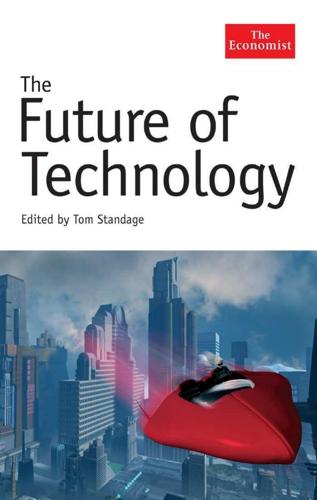
The Future of Technology
by
Tom Standage
Published 31 Aug 2005
To add to the problems, some of these indices include big companies for which nanotechnology is only one of many activities. It is easy to see why a nanotechnology bubble might form, but if so, it will be nothing like as big as the ill-fated internet one, for several reasons. One of them is offered by Steve Jurvetson at Draper Fisher Jurvetson, a venture-capital firm based in Menlo Park, California: the number of people who can enter the business is limited by the number of science graduates available. In America, there is currently a shortage of science phds. Business school graduates working in banking or consulting cannot start nanotechnology companies in the way they created new internet companies. 323 THE FUTURE OF TECHNOLOGY Another anti-bubble factor is the high capital cost of setEstimate for “the market for nanotechnology”, $bn ting up business in nanotechPredictions made in*: 2002 2003 2004 2001 nology.

More Everything Forever: AI Overlords, Space Empires, and Silicon Valley's Crusade to Control the Fate of Humanity
by
Adam Becker
Published 14 Jun 2025
Singularity University, where “technology experts and entrepreneurs with a passion for solving humanity’s grand challenges” can “exchange ideas and facilitate the use of rapidly developing technologies,” was cofounded by Kurzweil in 2008 with funding from Google, Autodesk, and other Silicon Valley firms.60 And in 2012, Kurzweil took up a job at Google as a director of engineering, upon the personal invitation of Google cofounder and then CEO Larry Page.61 “These are ideas with tremendous currency in Silicon Valley; these are guiding principles, not just amusements, for many of the most influential technologists,” explains the computer scientist Jaron Lanier.62 Many leaders in tech—including Bill Gates and Elon Musk—think highly of Kurzweil and his ideas. “Ray Kurzweil’s Moore’s Law abstraction is the most important thing ever graphed,” says billionaire and tech venture capitalist Steve Jurvetson. “Its continuity—over his lifetime of writing—is the greatest take-away for the future of humanity, and the future of intelligence.”63 The idea of the Singularity has even made its way into the halls of academia, where the concept has received some attention from philosophers. Bostrom, who was a philosophy professor at Oxford University for over fifteen years, has written extensively about a hypothetical intelligence explosion, both in academic papers and his 2014 book Superintelligence, a surprise bestseller heartily endorsed by Bill Gates.

Power Play: Tesla, Elon Musk, and the Bet of the Century
by
Tim Higgins
Published 2 Aug 2021
After a dry run in the fall of 2011 (conveniently offering a show for the media and test rides for customers, including Bonnie Norman, who teared up as she pulled up to the factory and saw the company’s large sign), the team ran ten cars through the assembly process in July 2012, building manually rather than using robotic arms. Each of those cars was to be turned over to an investor, such as Steve Jurvetson, an early board member who was close to Musk and had invested in other Musk ventures, including SolarCity. The crew worked almost nonstop for a month, finishing up at 3 a.m. most nights; every panel that came out of the stamping machine had to be manipulated by workers wielding hammers, who banged the panels into shape.

Valley of Genius: The Uncensored History of Silicon Valley (As Told by the Hackers, Founders, and Freaks Who Made It Boom)
by
Adam Fisher
Published 9 Jul 2018
Jamis MacNiven: Nan Omo was looking at pictures of venture capitalists, spying the room, seeing someone, going up and slapping down something the size of an old Manhattan phone book, saying, “This is the new Amazon, you’ve got to look at this!” Chris Caen: At the time everyone wanted to be the Amazon of fill-in-the-blank. “We want to be the Amazon of pets!” Pets.com! Jamis MacNiven: He chased Steve Jurvetson out across the parking lot. So I had to grab him and threaten to drop him in the creek if he didn’t stop. He goes, “Oh, but it’s my dream!” People came here with this big dream, and it was just off the hook. Chris Caen: So imagine there is more money than God, and it has no place to go, but there are a lot of cocktail napkins with things scribbled on them, and those are what are called start-ups.
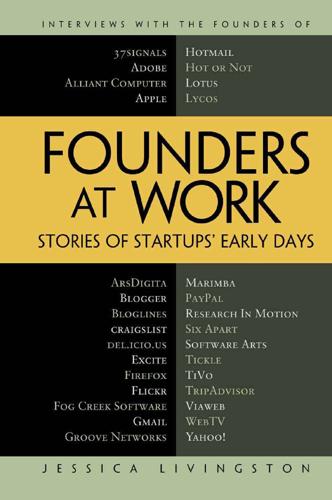
Founders at Work: Stories of Startups' Early Days
by
Jessica Livingston
Published 14 Aug 2008
Of course, that was very early on and now everything is all fine and dandy, but at that point in time . . . we had a term sheet for a much higher valuation. But when we would talk to any other VC, the other VC would call the guys at DFJ and they’d say, “No, don’t invest in them.” Livingston: Were they helpful at all? Bhatia: Yes. Steve Jurvetson was very helpful; he introduced us to a lot of peo- ple and, on the whole, they’re a good VC firm in the sense that they try to put deals together. But sometimes they don’t play by the rules. Sabeer Bhatia 21 Nobody knows this, but the round before the deal with Microsoft, they literally put $5 million in the company just because they knew it was going to get sold and that we needed some bridge money.
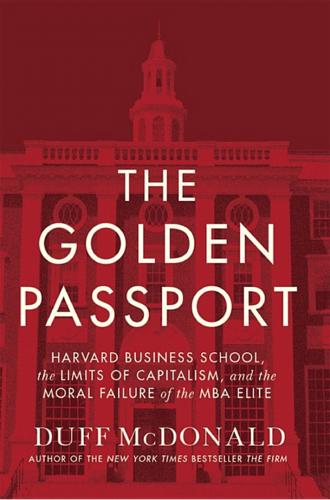
The Golden Passport: Harvard Business School, the Limits of Capitalism, and the Moral Failure of the MBA Elite
by
Duff McDonald
Published 24 Apr 2017
There is Tim Draper (’84), son of William Draper III. Another Stanford undergraduate who earned his MBA at HBS, Draper took a job at investment bank Alex, Brown & Sons after graduating but left just one year later to start his own venture capital firm, where he was joined by partners John Fisher and Steve Jurvetson. The three pioneered the “spray and pray” approach of making a large number of investments in promising young firms. The approach—making one hundred bets in the hopes that a few “ten-baggers” pay for all the losers—has been widely emulated by VCs and angel investors since. Among DFJ’s winners: Tesla Motors, Skype, Baidu, and SolarCity.

Networks, Crowds, and Markets: Reasoning About a Highly Connected World
by
David Easley
and
Jon Kleinberg
Published 15 Nov 2010
Optimizing search engines using clickthrough data. In Proc. 8th ACM SIGKDD International Conference on Knowledge Discovery and Data Mining, pages 133–142, 2002. [225] Ramesh Johari and Sunil Kumar. The interaction of positive externalities and congestion effects, 2006. Working paper. [226] Steve Jurvetson. What exactly is viral marketing? Red Herring, 78:110–112, 2000. [227] Daniel Kahneman and Amos Tversky. On the psychology of prediction. Psychological Review, 80(4):237–251, 1973. [228] Sham M. Kakade, Michael J. Kearns, Luis E. Ortiz, Robin Pemantle, and Siddharth Suri. Economic properties of social networks.

Rationality: From AI to Zombies
by
Eliezer Yudkowsky
Published 11 Mar 2015
Many in Silicon Valley have observed that the vast majority of venture capitalists at any given time are all chasing the same Revolutionary Innovation, and it’s the Revolutionary Innovation that IPO’d six months ago. This is an especially crushing observation in venture capital, because there’s a direct economic motive to not follow the herd—either someone else is also developing the product, or someone else is bidding too much for the startup. Steve Jurvetson once told me that at Draper Fisher Jurvetson, only two partners need to agree in order to fund any startup up to $1.5 million. And if all the partners agree that something sounds like a good idea, they won’t do it. If only grant committees were this sane. The problem with originality is that you actually have to think in order to attain it, instead of letting your brain complete the pattern.